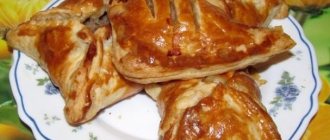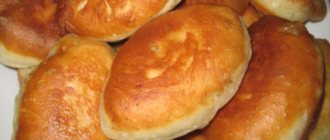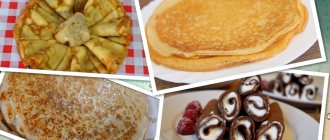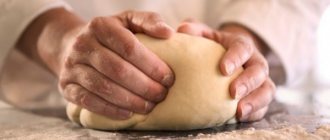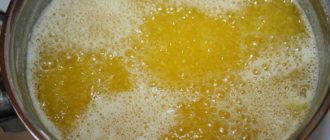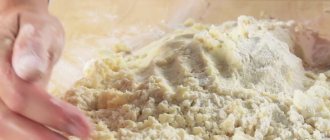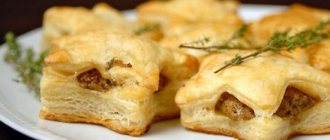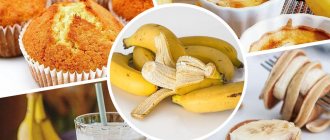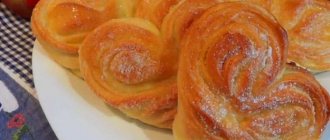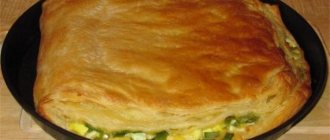Lifehacks
Adviсe
For those who often and for a long time work with baked goods, the question of whether to grease a baking sheet may seem funny and trivial, but even for professional bakers there are a couple of undisclosed secrets. For example, what can be used besides oil , and is it really necessary?
“With Taste” will talk about this in order to reduce the number of hours spent just on soaking and scrubbing dishes for baking . Indelible stains, soot and sticky dough will be a thing of the past.
Types of molds
Silicone molds are lubricated with oil only before first use. But glass and metal need protection before each use. This also applies to non-stick coating. If there is no oil at hand, cover the bottom with oiled parchment. You can also find silicone sheet in stores that does not need to be treated with grease.
Spreading options for savory baked goods
You can cover not only baked goods with a layer of fondant, but also savory dough. As a result, the crust will become soft and acquire a beautiful shade and shine. Among the most popular spreads are:
- sour cream - will make the baked product rosy and glossy;
- melted butter with sour cream - the top will be yellow;
- milk – the finished product will delight you with a soft crust;
- mayonnaise;
- melted butter is an ideal solution for pie and casserole;
- sunflower oil.
Well, a very simple recipe for cherry pie.
Cherries are an incomparable filling for yeast baked goods. Juicy berries go perfectly with soft, fluffy, rosy dough….
In addition, you can add a pinch of turmeric to each of these ingredients. As a result, the top will have a yellowish tint.
What to lubricate with?
The choice of oil should be taken responsibly, as the wrong product can spoil the taste of the dish.
Vegetable oils
Most often, sunflower oil, always refined, is used to lubricate the baking sheet. Why? The aroma of sunflower or olives makes baked goods less appetizing. Some people use sesame or flax oil. But in this case, you should be careful, because these products have a short shelf life and a bitter taste.
Butter, margarine, spread
Soft butter is best, because it forms a golden brown crust and gives baked goods a pleasant aroma. You can also use margarine, which has no odor. The downside of these options is the calorie content. The same applies to spread (made from milk fat, vegetable oil and other ingredients).
Answers to popular questions about greasing baking sheets
- Do I need to grease the pan when baking in foil? When baking food in foil (or on foil), there is no need to grease the baking sheet with anything underneath it.
- Do I need to grease the baking sheet when baking in a sleeve in the oven? If you bake foods in a sleeve in the oven (for example, pork, chicken or fish), you do not need to grease the baking sheet.
- Do I need to grease the baking sheet under the parchment? As with using a sleeve and foil, there is no need to grease the baking sheet under the parchment.
- What is the best oil to grease a baking tray? The most popular and universal solution for greasing a baking sheet is the use of refined vegetable oil.
- Do I need to melt the butter before greasing the pan? It is not necessary to melt the butter; you can grease the baking sheet with a “hard” piece of butter.
Brush or hands?
The technique depends on the type of oil:
- It is most convenient to distribute vegetable oil with a silicone brush - then it is easy to wash, and your hands are clean for the next task or leafing through the recipe.
- “Granny’s” alternative to a brush - a feather, a brush made of natural hair, half a potato, cut side down on a fork.
- There is no need to melt the butter or spread - just prick it with a fork and grease the baking sheet. If you don't want extra calories, make the layer thinner.
- If neither tool is comfortable for you, apply it with your hands, but it’s better to wear gloves - so as not to wash and leave greasy marks on dishes and kitchen appliances, and above all, on a recipe book and phone.
Tip: If the dough is yeast, be sure to work the walls, as it will rise and stick.
How can you grease a baking sheet to prevent anything from burning?
If you do not use additional “linings”, the baking sheet must be greased and the following are perfect for this purpose:
- Vegetable oil. The most common option for lubricating a baking sheet is with vegetable oil, which is applied to its inner surface in a thin layer using a culinary silicone brush. It is better to use refined oil (odorless and more transparent), which will not affect the taste and aroma of the finished baked goods. Vegetable oil can be used when baking any pies, pies made from puff and yeast dough, Easter cakes, cookies, bread, muffins, biscuits, pizza, when baking fish, meat and other products in the oven.
- Butter. When baking sweet (and other) pastries, it is often recommended to use butter to grease the baking sheet, thanks to which the baked goods do not burn and have a golden brown hue. For lubrication, it is better to choose high-fat butter (from 72.5%), which contains a minimum of liquid and more fat.
- Margarine. Margarine is most often used as a substitute for butter (cheaper), but it has similar properties.
- Pork lard. Fat from melted lard is an excellent protection against baking on the baking sheet, but it is not advisable to use it when preparing sweet baked goods (it may affect the taste). Instead of lard, a baking sheet is often greased with an ordinary piece of fresh lard (salted can also be used), for example: before baking homemade bread or when baking pies with meat or mushrooms.
- Beeswax. A rarer ingredient in the kitchen, but no less effective. Beeswax can reliably protect baked goods while they are baking in the oven; just grease the baking tray with a piece of wax inside and you don’t have to worry about the baked goods burning and sticking.
Note: when using vegetable oil, many housewives additionally sprinkle the baking sheet with a thin layer of flour after greasing it with oil so that the baked goods do not absorb excess oil during cooking.
The baking tray itself can be greased using a silicone brush, a regular pen (the old fashioned way), or by hand, depending on the “lubricant” chosen. For example, it is most convenient to lubricate vegetable oil with a silicone brush or stylus, and harder “lubricants” (butter, lard, margarine) can be put on a fork and grease a baking sheet with them, or you can do it manually (by taking a piece in your hands, you can use gloves, so as not to wash your hands for a long time after such a procedure).
Conclusion: to lubricate the baking sheet, it is best to use sunflower (vegetable) oil and pork lard, while a good option would be to use an additional spacer between the baked goods and the baking sheet (foil or parchment), a lot depends on what will be baked.
Alternative methods
Oiled parchment will replace regular parchment or tracing paper - but the bottom will need to be greased with vegetable oil. This litter will protect the baked goods from excess fat. You can also lay out foil and flour packaging (white side facing the dough) - be sure to coat them with oil. Teflon sheet is also sold.
If there is not enough oil, sprinkle the pan with flour or semolina. This will give a crispy crust, which will be especially appreciated by pizza lovers with a thin and brittle crust. An alternative is crackers.
If you are making a cake with chocolate, sprinkle the bottom of the baking sheet with cocoa powder. This will allow the dough to stick to the fine particles rather than to the pan. By the way, this method is used by famous confectioners all over the world.
Confectioners all over the world widely use a special mixture. To prepare it yourself, take flour, ghee and sunflower oil in a ratio of 1:1:1 and thoroughly beat the ingredients to a creamy consistency. If you store the composition in the refrigerator, you can use it within 10 months.
Pies, muffins, pizza, cake layers - all this is cooked in the oven, but for the dishes to turn out tasty, they must be baked and not burnt. The main secrets have been revealed, and now you know how and with what to grease the baking sheet before baking so that the dough does not stick.
How and when should you brush the pies with egg for a rosy and beautiful shine?
Chicken egg is a universal coating for any baked goods. It makes the baked goods both glossy and browned. Very simple! But even in this case, there are nuances that are worth discussing.
What is better to use for lubrication - a whole egg, yolk or white?
If you want yeast pies or buns to acquire a golden, glossy crust , it is recommended to use a whole egg to glaze them. To do this, you need to drive it into a small deep bowl and shake it with a hand whisk or fork. There is no need to vigorously beat until fluffy, since bubbles will remain on the surface of the dough, which will turn into unevenness as a result of baking. The top of the pies will not be perfectly smooth and shiny. This option for lubricating pies is universal and saves time, because... There is no need to divide the egg into its components. In addition, more of the lubrication mixture itself comes out.
When the “varnish” top of baked goods made from yeast dough is not important, but you just want to get a beautiful blush , it is better to grease the dough with yolk, without white. However, egg yolk in its “pure” form is usually not used, since the mass will be too thick and will be applied to the pies in a too dense, thick layer. Most often, a little (1-2 tsp) water or milk is added to it, and then ground until smooth. This mixture spreads more easily over the dough and gives an intense golden brown color after baking.
Protein is used when baked goods need to be given shine and a crispy crust . Traditionally, it is used to lubricate products made from shortcrust pastry, which itself turns golden brown due to the large amount of fat in the composition, i.e. it does not require additional lubrication with yolk. Lightly beaten egg whites are applied in a thin layer before placing the baked goods in the oven. There is no need to achieve a stable foam when whipping the protein mass. It is enough for the protein to lose its elasticity.
More on the topic:
Make friends with this yeast dough - and always bake delicious pies, soft and light as feathers
Technology of applying egg mixture to pies before cooking in the oven
Brush the pies with the glazing mixture carefully, using smooth movements, using a soft pastry brush. The layer should be as thin as possible, but continuous, without sagging or bald spots. Then the ruddy coating of the pies will be uniform and appetizing. First, you need to coat the top of the products, and then the side parts, so that the baked goods become golden brown on all sides.
Another important point. The egg and other frosting components should not just come out of the refrigerator, but should be allowed to warm to room temperature. Otherwise, yeast baked goods may not be suitable when in contact with cold mixture.
When is it better to brush the dough with egg so that the baked goods brown and rise well?
It is advisable to grease yeast buns or pies after proofing
, just before going into the oven, when the molded products have already risen well. After applying the egg layer, you need to take 5 minutes to dry it.
If you lubricate the product immediately after molding, the glazing may interfere with proper proofing.
Some professional bakers advise frosting the baked goods 7-10 minutes before they are ready.
when she grows up thoroughly. Then the crust will be as uniform as possible, without cracks or pale areas.
It is also advisable to grease large pies or rolls shortly before the end of baking. They take longer to bake than standard pies, so the egg crust may burn during this time.
How to grease the top of the pies if you don’t have a pastry brush?
Ideal for brushing baked goods with egg or other mixtures are special brushes with soft bristles or a silicone tip. You can replace the brush:
- Goose, chicken or duck feather (you can tie several pieces together). To do this, poultry feathers are poured with boiling water, washed and dried.
- Folded several times with gauze or bandage.
- A paper napkin.
- A disposable brush made of “office” paper. You need to roll up a blank sheet and make many frequent cuts on one side with scissors - you will get something like a brush.
- A food bag. You need to put it on your hand and distribute the egg among the preparations. It won't be as neat as using a brush, but sometimes this option really helps.
More on the topic:
Simple recipes for delicious pies with jam in the oven - the filling will not leak out
If the baked goods burn
Vegetable oil usually completely protects the pies, and butter allows a golden brown crust . In the case of a flat cake, you need to be very careful: it can burn. To do this, you need to be insured.
- Parchment paper
Sometimes it’s not enough to just use special parchment ; it’s better to oil it additionally. The paper will absorb excess oil and also protect the baking sheet from traces of burning. Especially relevant for sweet baked goods. Foil
It is smoother, so cheese and, for example, meringue stick to it less easily. However, even in this case, we recommend using at least some kind of fat, because if paper getting into food is not dangerous , then foil is very much so.
Teflon and silicone sheets
A new product in cooking that is quickly gaining popularity and gaining fans. A flat sheet of Teflon or silicone is used in the same way as paper or foil - placed on the bottom of the mold. Nothing sticks to it or burns, so no oil is needed.
Sometimes greasing the mold is half the battle. If you use a loose product, the dish will stick to it and not to the surface of the dish. Flour or semolina are suitable for this, and in the case of sweet baked goods (especially chocolate) - cocoa powder. Take advantage of our tips and share them with others if you find them useful! After all, everyone should know how to bake in the oven and what to use, and who needs a dirty baking sheet?
Spreads for sweet pastries
If there are baked goods with a sweet filling in the oven, you can cover them with the same mixtures as for unsweetened dough. The only exception is mayonnaise. In addition, cooks often use:
- black tea - add 2-3 tbsp per 100 ml of drink. granulated sugar. The pies are soft and have a glossy sheen;
- sweet water - mix sugar and water in equal proportions.
To serve delicious pastries with tea, you need to use sprinkles in addition to the spread. Powdered sugar, chopped nuts, candied fruits, berries, fruits, spices, etc. are suitable for these purposes.

